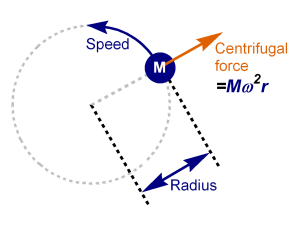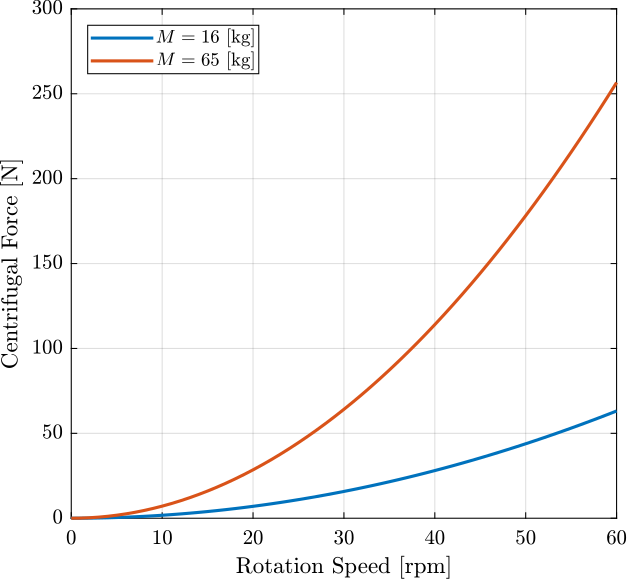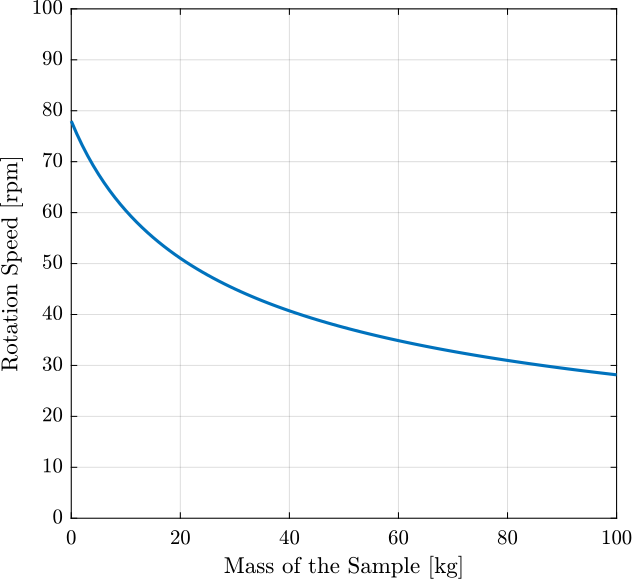Centrifugal Forces
Table of Contents
In this document, we wish to estimate the centrifugal forces due to the spindle’s rotation when the sample’s center of mass is off-centered with respect to the rotation axis.
This is the case then the sample is moved by the micro-hexapod.
The centrifugal forces are defined as represented Figure 1 where:
- \(M\) is the total mass of the rotating elements in \([kg]\)
- \(\omega\) is the rotation speed in \([rad/s]\)
- \(r\) is the distance to the rotation axis in \([m]\)

Figure 1: Centrifugal forces
1 Parameters
We define some parameters for the computation.
The mass of the sample can vary from \(1\,kg\) to \(50\,kg\) to which is added to mass of the metrology reflector and the nano-hexapod’s top platform (here set to \(15\,kg\)).
M_light = 16; % mass of excentred parts mooving [kg] M_heavy = 65; % [kg]
For the light mass, the rotation speed is 60rpm whereas for the heavy mass, it is equal to 1rpm.
w_light = 2*pi; % rotational speed [rad/s] w_heavy = 2*pi/60; % rotational speed [rad/s]
Finally, we consider a mass eccentricity of \(10\,mm\).
R = 0.1; % Excentricity [m]
2 Centrifugal forces for light and heavy sample
From the formula \(F_c = m \omega^2 r\), we obtain the values shown below.
| Force [N] | |
|---|---|
| light | 63.2 |
| heavy | 0.1 |
3 Centrifugal forces as a function of the rotation speed
The centrifugal forces as a function of the rotation speed for light and heavy sample is shown on Figure 2.

Figure 2: Centrifugal forces function of the rotation speed
4 Maximum rotation speed as a function of the mass
We plot the maximum rotation speed as a function of the mass for different maximum force that we can use to counteract the centrifugal forces (Figure 3).
From a specified maximum allowed centrifugal force (here set to \(100\,[N]\)), the maximum rotation speed as a function of the sample’s mass is shown in Figure 3.
F_max = 100; % Maximum accepted centrifugal forces [N] R = 0.1; M_sample = 0:1:100; M_reflector = 15;

Figure 3: Maximum rotation speed as a function of the sample mass for an allowed centrifugal force of \(100\,[N]\)